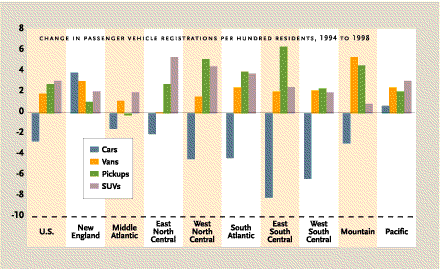Observations 
Office Conversions
The Boston market for office space has been so hot that some tenants have resorted to former retail space. Conversions have taken place or are being considered in some of the more visible shopping areas in the city. The 1885 landmark building that housed Waterstone’s Booksellers, on the corner of Exeter and Newbury Streets, has become the new home of Idealab!, a California-based company that creates, launches, and operates Internet businesses. The upper floors of what used to be the Syms building at 55 Summer Street in Downtown Crossing will be turned into Class A office space now that the clothing retailer has left, and the same is true for the neighboring Woolworth’s building, says Mark Browne, principal at Browne Realty Advisors Inc.
While rents for retail space were stable during 2000, the office market saw unprecedented increases, with deals for $77 per square foot at Rowes Wharf and $85 per square foot at International Place making the headlines. A vacancy rate that dipped as low as 1.5 percent, with most of the new construction entering the market already accounted for, has made Boston’s office market one of the most expensive in the nation, along with San Francisco and New York. Although demand driven by Internet startups cooled at the end of the year, most analysts believed that because of pent-up demand, a glut of office space was unlikely.
Given the tightness of the office market, one might have expected to see even more retail spaces turning into offices. But conversions from retail to office space are typically rather rare. “Retail is very specialized, always in the ground floor, and generally has rents that are much higher [than office rents],” says MIT Professor William Wheaton. In a prime retail location, such as Newbury Street, rents can be as high as $100 per square foot, while the prime Class A office space downtown commands rents in the high $60s. Older industrial buildings are the more common targets for conversions into offices, as factories and warehouses command lower rents and offer larger blocks of space that can be easily adapted to the needs of businesses.
“What you have are essentially underperforming retail spaces becoming much-needed office space,” says Ted Chryssicas of Meredith and Grew Inc. Specialists agree that the Waterstone’s building did not have prime retail visibility and access: The entrance was on the more residential Exeter Street, and the booksellers’ space was in the upper floors.
“Vertical retail [beyond two floors] does not work in Boston,” says Browne. “It works in markets like Chicago and Manhattan that have the density and demographics to support the sales.” So, while offices take over the upper floors, the Waterstone’s Booksellers building will retain retail in the ground level, as will the former Syms and Woolworth’s buildings.
For the historic Waterstone’s brownstone and granite building, the conversion to office space is one more — and not the most dramatic — change. The structure was initially designed by Boston architects Hartwell and William C. Richardson to house the First Spiritual Temple of the Working Union of Progressive Spiritualists, an organization founded by Richardson whose members believed they could communicate with higher beings through psychics. The building then became the Exeter Street Theater, one of the first movie theaters in the United States. Following the closing of the movie theater in the 1980s, the building housed Conran’s, a home goods store, before lodging the Waterstone’s Booksellers, and even endured a ravaging fire. A conversion to office space is just another page in its history book.
Gear Shift
| The United States has seen an increase in registrations per capita of sport utility vehicles, vans, and pickups, but a decline in the number of cars. New England shared the country’s taste for larger vehicles, but it bucked the national trend by also marking an increase in car registrations. Whatever the ride, New Englanders seem to love to drive; they lead the nation in per capita growth for all vehicles. |
 |
| SOURCE: Federal Highway Administration NOTE: States in each region are: New England-CT, MA, ME, NH, RI, VT; Middle Atlantic-NJ, NY, PA; East North Central-IL, IN, MI, OH, WI; West North Central-IA, KS, MN, MO, ND, NE, SD; South Atlantic-DC, DE, FL, GA, MD, NC, SC, VA, WV; East South Central-AL, KY, MS, TN; West South Central-AR, LA, OK, TX; Mountain-AZ, CO, ID, MT, NM, NV, UT, WY; Pacific-AK, CA, HI, OR, WA. |
MIRIAM WASSERMAN and LISIA ZHENG



